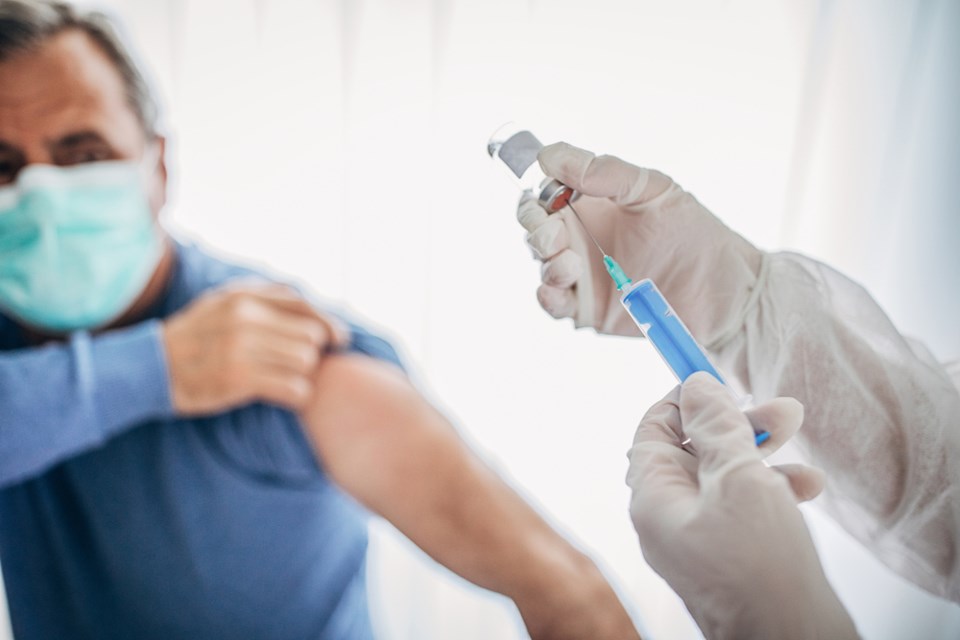New COVID-19 cases in Burnaby are continuing to skyrocket, according to the latest data from the BC Centre for Disease Control, with the city getting closer to its weekly record.
In an update posted to the BCCDC website, Burnaby saw 243 new coronavirus cases from Feb. 14 to 20. That’s well above the 197 new coronavirus cases from Feb. 7 to 13 – a dramatic spike from the period of Jan. 31 to Feb. 6, in which Burnaby had 121 new coronavirus cases. From Jan. 24 to 30, Burnaby had 124 new coronavirus cases. Those two weeks were both down from Jan. 17 to 23, when Burnaby had 155 new coronavirus cases.
The most cases Burnaby has seen in one week was 341 from Dec. 6-12.
The outbreak at Burnaby Hospital was declared over on Wednesday, and the outbreak at the long-term care home George Derby Centre continues, with more than 100 cases, and 36 deaths.
An outbreak also continues at the SFU Childcare Society, Burnaby’s biggest daycare, with at least 28 cases reported.
From Jan. 10 to 16, there were 111 new coronavirus cases in Burnaby. There were 152 new cases from Jan. 3-9. There were 169 cases from Dec. 27-Jan. 3 – which was a large drop from Dec. 20 to 26, when there were 214 new cases in Burnaby – a drop from the 287 new cases from Dec. 13-19 and 341 cases from Dec. 6-12.
While cases dropped as December went on, the month was also Burnaby’s worst with 1,139 new cases, compared with the 1,081 new cases during November. Burnaby had just 287 new cases in all of October and 238 cases in September.
According to the BCCDC, Burnaby had 3,077 COVID-19 cases between Jan. 1 and Dec. 31, 2020.
Health officials identified two people who died from COVID-19-related causes overnight Tuesday, after one such death was recorded the day before. While that raises the province's death toll from the virus to 1,338, the three deaths in two days is the lowest two-day total since November 5 and 6, when there were two COVID-19-related deaths identified.
This good news is partly because 98% of seniors in care homes have been vaccinated, provincial health officer Bonnie Henry told media yesterday. She called the success of the vaccine in older people "miraculous."
Nonetheless, B.C.'s roll-out of vaccines continues to be slow, with only 6,521 doses being administered in the past 24 hours. There were 2,809 additional people who got a vaccine dose in the past 24 hours, and 3,712 doses went to people as a second dose.
In total, 230,875 doses have been given to 168267 people, with 62,608 people getting second doses. Starting in March, if around four million eligible British Columbians remain unvaccinated, the province would have to vaccinate about 19,000 people per day in order for all of them to be vaccinated by the end of September.
"Just as our health-care system has risen to the challenge of protecting and caring for people who have become ill with this virus, so too are countless others working hard to get people immunized as quickly and safely as possible," Henry and Health Minister Adrian Dix said in a joint statement.
"Vaccinating our entire population is a monumental task that must account for the diversity of our geography and our population. We must consider how to safely deliver vaccine to rural and remote communities, how to connect with seniors and elders everywhere, and how to ensure the process to get immunized is as simple as possible. We are pushing hard right now, and we must continue to balance speed with the need for careful thought and planning."
There were 456 newly identified infections in the past day, down by 103 from yesterday. A total of 78,278 people in B.C. have contracted the virus since officials detected the first case on January 28, 2020.
The vast majority of the 4,668 people actively battling infections have been told to self-isolate, although 237 are in hospital, with 64 of those inflicted seriously enough to be in intensive care units.
More than 92.2% of those infected in B.C., or 72,219 individuals, are considered to have recovered because they have tested negative for the virus twice. Another 7,924 people are being closely watched by health officials for symptoms because they have had known exposure to at least one identified case.
- With files from Glen Korstrom, Glacier Media



